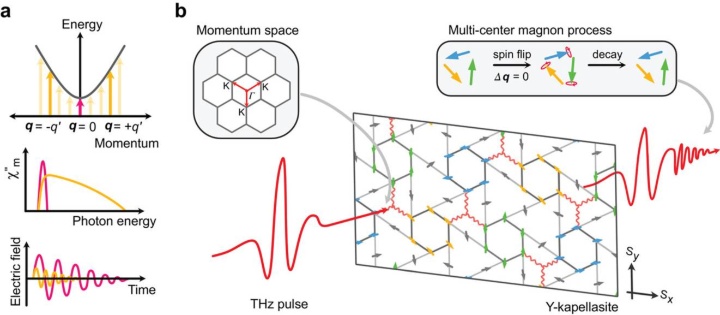EMFL NEWS
European Magnetic Field Laboratory NEWS
New Article in Advanced Quantum Technologies
T. Biesner, S. Roh, A. Razpopov, J. Willwater, S. Süllow, Y. Li, K.M. Zoch, M. Medarde, D. Gorbunov, Y. Skourski, A. Pustogow, S.E. Brown, C. Krellner, R. Valentí, P. Puphal, M. Dressel
Multi-Center Magnon Excitations Open the Entire Brillouin Zone to Terahertz Magnetometry of Quantum Magnets
Advanced Quantum Technologies 5, 2200023 (2022)
https://onlinelibrary.wiley.com/doi/full/10.1002/qute.202200023
doi.org/10.1002/qute.202200023
When three magnetic sublattices arranged like a mercedes star are simultaneously excited by terahertz light pulses, distinct time traces are observed that allow access to the spin (magnon) density of states (SDOS) over the full Brillouin zone. Three-center magnons are a novel approach to remove the zone-center constraint commonly imposed to photons.
Abstract:
Due to the small photon momentum, optical spectroscopy commonly probes
magnetic excitations only at the center of the Brillouin zone; however, there
are ways to override this restriction. In case of the distorted kagome quantum
magnet Y-kapellasite, Y3Cu9(OH)19Cl8, under scrutiny here, the spin
(magnon) density of states (SDOS) can be accessed over the entire Brillouin
zone through three-center magnon excitations. This mechanism is aided by
the three different magnetic sublattices and strong short-range correlations in
the distorted kagome lattice. The results of THz time-domain experiments
agree remarkably well with linear spin-wave theory (LSWT). Relaxing the
conventional zone-center constraint of photons gives a new aspect to probe
magnetism in matter.



